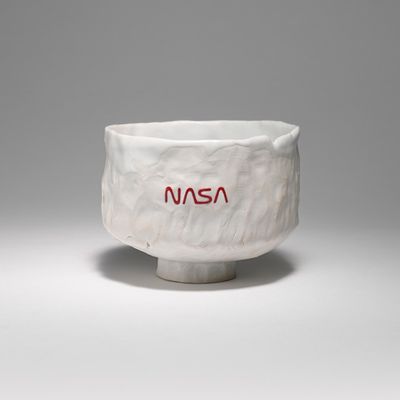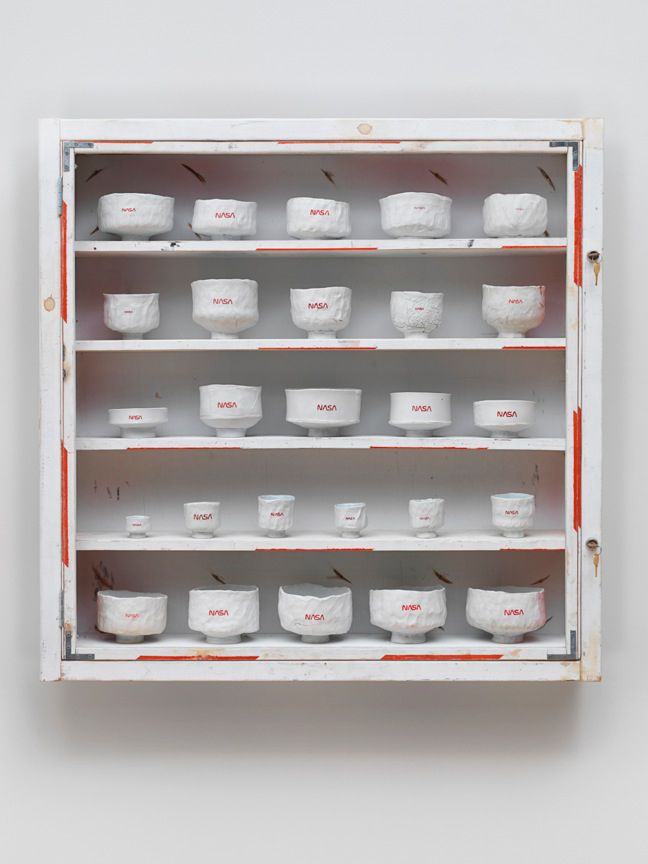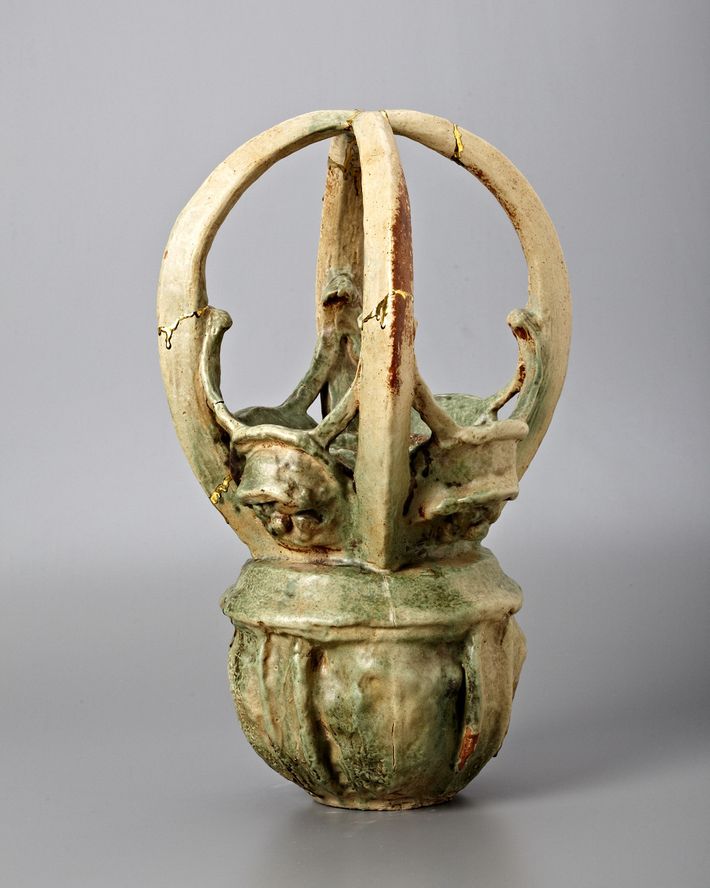
SEEN learned how Jeanne Greenberg Rohatyn, the owner of Salon 94, was first introduced to the tea ceremony, an ancient Japanese tradition, and how she learned to appreciate it again this year ÔÇö as a busy New Yorker with too much to do and too little time ÔÇö through the eyes of Tom Sachs.┬á
I first discovered the tea ceremony where one ought to: in Japan.┬á It was 1997, and I was┬ávisiting┬áDavid Hammons during his residency in┬áthe city of┬áYamaguchi. Our host,┬áan┬áart dealer,┬áwas a lay practitioner, typical among women of her generation and status.┬áI┬áadmired her transformation from patron to serene chief in command and noticed her highly formalized movements hidden beneath a kimono. For the next few (endless) hours, she led us through a series┬áof controlled and learned┬ásteps, her body enacting┬áa┬áfaint and┬áancient dance.┬áAs she┬áserved┬áthe thick,┬ábitter green-tea, I sat in awe of her silence┬áand her sleight of┬áhand. Only later┬ádid I┬árealize┬áthat┬áthis┬ápractice held┬áa cultural┬ávalue┬áequal┬áto her work┬áas┬ágallerist, wife,┬áand mother.┬áThe┬átearoom┬á(chashitsu)┬áwas┬áher refuge.┬áAt the ceremonyÔÇÖs finish, she invited us to look more closely at the┬áutensils┬áand bowls.┬áI┬áwas fascinated┬áby her collection of modest┬ástoneware ÔÇö at once both┬ápractical┬áand aesthetic objects.
But as a New Yorker, I had little patience for this unabridged tea ceremony. This year, I found my tea-ceremony kindred spirit when, on a visit to the studio, Tom Sachs pulled out a jerry-rigged, battery-powered chasen, whisking my powdered tea to just the right froth in seconds. Celebrating our limited attention spans, he has sped up the tea ritual with piped-in music and easier-to-wear garb (in collaboration with Nike), all in a super-sophisticated DIY setting. Despite his bells and whistles and high-octane pace, the traditional tea-ceremony steps and setup remain intact. Another devout student.

These┬ádays,┬áTom┬áhas been visiting me en route to his┬áclass at the 92nd┬áStreet Y, where he is making his┬áchawan, or tea bowls.┬áHe has made some 220┬áof them┬áand counting. My own burgeoning ceramic collection ÔÇö which includes pots and┬áobjects of all sorts and dates ÔÇö serves as a study lab.┬áTom loves┬ápointing┬áout┬áthe evidence of a clay potÔÇÖs┬ámaking ÔÇö stress points,┬áa slab┬ábody,┬áor┬áspots of┬álustre┬ápowder in an enamel┬árepair. This makes sense, as objects┬áin his┬ástudio are in┬áa┬áconstant state of being broken and repaired.┬áDuct tape is always within┬áarmÔÇÖs reach;┬áa┬ávisible record of TomÔÇÖs┬áhand┬áis essential to his aesthetic practice.┬áOf course,┬ánow I understand how a┬ámended object develops an aura┬ábeyond the┬ástructural┬áinterests, and┬áthat┬áthrough the aesthetics of repair, an object┬ácan espouse┬áZen ideals of┬árebirth,┬ánatural accident,┬áand beauty.┬áI am┬ástruck by the audacity of a nonfunctional gold drip, a┬ásignature,┬áfor example,┬áby the conservator on my favorite 1907 Georges┬áHoentschel┬ávase.
It is said┬áthat┬ámatcha┬álooks best in a black bowl. Then TomÔÇÖs white┬áporcelain┬áwith its NASA signage┬áis the completely wrong color!┬áHis┬ásingle┬áblack tea-hut-style┬ábowl┬ástands┬áout as┬áthe ÔÇ£black sheepÔÇØ┬áin┬áa cabinet┬áfilled with white ones.

But┬áall good ceramicists┬áare rebels┬áand outliers. Master Betty Woodman recently refused to have her work shown in a decorative art museum, and as┬áher dealer, I concurred. Set on┬ámy coffee table and casually placed on┬áshelves, my things of clay function seamlessly as artworks, bowls, and/or flower vases.┬áAnd┬áwhile they┬ásit┬áoutside any sacred or secreted┬áceremony, they respect the┬átea-house┬ámantra that every object is carefully chosen, used,┬áand admired. TomÔÇÖs┬áand BettyÔÇÖs work┬áare not┬áprivileged┬áraku┬áware┬áladen in tradition,┬ábut rather, artworks of a contemporary kind.┬áTheir vessels will┬áacquire their stories and history┬áoutside any tearoom.┬áRight┬ánow, I┬áam using my Tom┬áSachs┬áchawan┬áfor┬ádrinking water in the office, while hollering for someone to answer the┬ádoor.


